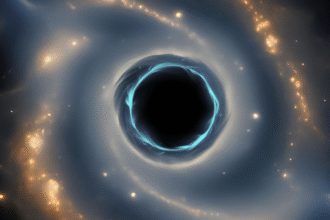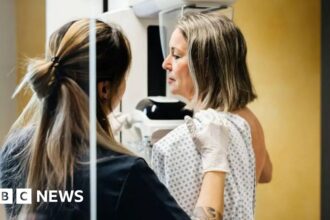Introduction
The WHO1 has formally defined burnout as a syndrome resulting from chronic workplace stress that has not been successfully managed, which was incorporated into the 11th Revision of the International Classification of Diseases. It is characterised by three dimensions: emotional exhaustion (EE), depersonalisation (DP) and a sense of reduced personal accomplishment (PA).2 Currently, burnout among healthcare professionals has reached epidemic levels, posing a significant global crisis.3 4 The occurrence of burnout has adverse effects on both patient care safety and stability of medical workforce.4 5 Physician burnout doubled the risk of patient safety incidents (OR=2.04, 95% CI 1.69 to 2.45).6 A multicentre study found that among physicians and nurses who experienced high burnout, 30%–40% were considering turnover.7 In addition, several studies have demonstrated a negative impact of burnout on the mental health of intensive care unit (ICU) professionals.8 9 A study indicated that ICU nurses experiencing burnout were 5.33 times more likely to exhibit depressive symptoms than those without burnout (OR=5.33, 95% CI=1.26 to 22.57, p=0.033).8 An investigation regarding stress and burnout among ICU nurses revealed moderate levels of perceived stress.10 Consequently, there is growing concern that burnout may constitute a serious threat to the future supply of the global healthcare workforce.11
Pre-pandemic studies indicated that healthcare professionals, especially ICU physicians and nurses, were at high risk of burnout, with prevalence rates ranging from 22.7% to 59.0% in Western countries and 34.6% to 61.5% in Asia.12–16 The COVID-19 pandemic significantly exacerbated this crisis. Surveys conducted across multiple countries and regions showed a higher level of burnout among ICU staff during the pandemic.17–22 A research study conducted in the USA revealed a significant increase in the prevalence of burnout, with rates increasing from 59% in 2017 to 69% in 2020.15
Previous studies have explored factors associated with burnout among physicians and nurses.12 16 23–25 Based on an extensive review of the literature, these factors can be generally classified into three categories: organisational factors, individual factors and worke-related factors.4 16 26 Organisational factors include hospital grade, public ownership of hospitals and workplace support, among others.4 16 27 Some of the individual factors include gender, educational level and marital status.16 25 28–30 Occupational factors encompass various aspects such as long working hours, frequency of night shifts and paid vacation days.25–27 29–31
In China, several surveys examining burnout among ICU professionals were conducted prior to the COVID-19 pandemic.27 30 A nationwide survey, which assessed 1122 physicians and 1289 nurses across various types of ICUs, reported a burnout rate of 69.7%. Contributing factors included low exercise, working in high-quality hospitals, working experience, night shifts and fewer paid vacations.27 However, recent articles on burnout during the pandemic have mainly focused on the broader healthcare workforce, with limited available information specifically pertaining to ICU specialised staff.32–34 The extent and factors of burnout experienced by ICU physicians and nurses in China during the post-pandemic era (defined as the period following the emergency phase of the global COVID-19 pandemic) remain poorly understood.
Therefore, this study aimed to: (1) investigate the prevalence of burnout among ICU physicians and nurses in China during the post-pandemic era and examine the associated organisational, individual and occupational factors and (2) explore mental health problems, including depression and stress, and analyse their relationship with burnout. The findings offer valuable reference that can guide future research and the development of targeted interventions aimed at mitigating burnout and enhancing the well-being of ICU healthcare professionals. These efforts are essential for supporting the sustainability and resilience of healthcare institutions in the post-pandemic era.
Results
General characteristics of the participants
A total of 1488 participants completed the online questionnaires, of which 1447 (97.2%) were included in the final sample after rigorous screening. The remaining 41 questionnaires were excluded due to identical responses across all questions or logical inconsistencies within the answers. A total of 1447 participants were recruited from the eastern (70.6%), middle (17.7%) and western (11.7%) regions of mainland China. Among the participants, 676 (46.7%) were ICU physicians, and 771 (53.3%) were ICU nurses. The age distribution of both groups was primarily concentrated within the 31–40 year range. Among ICU physicians, 292 (43.2%) were men, with the majority holding a bachelor’s, master’s or doctor’s degree. Among ICU nurses, 237 (30.7%) were men, and the majority of them had bachelor’s degrees. In this study, the characteristics of the organisational, individual and occupational levels among physicians and nurses were analysed (online supplemental table S1).
The prevalence of burnout, depression and stress among the participants
Among physicians and nurses, the prevalence of overall high burnout was significantly greater among nurses than among physicians (physicians 49.30%, nurses 59.40%, p<0.001). Moreover, among the three dimensions, physicians and nurses who reported low PA accounted for the highest proportion (physicians 77.10%, nurses 85.20%, p<0.001). Furthermore, a significant proportion of physicians and nurses exhibited symptoms indicative of major depression (physicians 24.00%, nurses 32.00%, p<0.001) and high levels of perceived stress (physicians 89.20%, nurses 78.00%, p<0.001) (figure 1).


The prevalence of burnout, depression and stress among physicians and nurses. DP, depersonalisation; EE, emotional exhaustion; PA, a sense of reduced personal accomplishment.
Correlations between burnout, depression and stress
According to Cohen’s effect size criteria, the χ2 test and φ analysis revealed moderate positive correlations between overall high burnout and major depression (total’s φ=0.458, physicians’ φ=0.431, nurses’ φ=0.471, p<0.001). In contrast, a weak positive association between overall high burnout and high stress was observed exclusively among nurses (φ=0.095, p=0.008) (table 1).
Correlation analysis between burnout, depression and stress
Factors associated with burnout among ICU physicians
Univariate and multivariate logistic regression were used to explore the factors contributing to overall high burnout. For ICU physicians, the results showed that marital status and work-life balance were the associated factors with burnout. Specifically, being married (in comparison to being unmarried) was associated with a lower risk of high-level burnout (OR=0.607, 95% CI=0.392 to 0.940). Physicians who maintained a neutral attitude to work-life balance were more likely to experience burnout than those who believed in the feasibility of achieving work-life balance (OR=1.621, 95% CI=1.022 to 2.571) (online supplemental table S2).
Factors associated with burnout among ICU nurses
Among ICU nurses, the following factors were identified as protective against the development of burnout: female gender (OR=0.698, 95% CI=0.500 to 0.974; compared with male gender) and consistent participation in epidemic prevention over the past 6 months (OR=0.547, 95% CI=0.344 to 0.868; compared with rare participation). In contrast, working in teaching hospitals (OR=1.672, 95% CI=1.113 to 2.510) and longer average ICU patient stays (≥9 days vs ≤5 days: OR=1.789, 95% CI=1.173 to 2.730) were associated with an increased risk of burnout (online supplemental table S3).
Discussion
This national cross-sectional study indicated that the prevalence of high levels of burnout among ICU nurses (59.40%) was higher than that among ICU physicians (49.30%) in the post-pandemic era. Meanwhile, the findings revealed that a substantial proportion of ICU professionals reported experiencing major depression and high-level perceived stress. Among ICU physicians, marriage served as a protective factor against burnout, whereas maintaining a neutral attitude towards work-life balance was associated with an increased risk. For ICU nurses, being women and consistent participation in the epidemic prevention were associated with a lower risk of burnout, while working in teaching hospitals and managing patients with longer ICU stays were associated with a higher risk.
A previous study conducted in China before the pandemic reported that 71.3% of ICU physicians and 68.3% of ICU nurses experienced burnout.27 According to their definition, which identified burnout based on high scores in any of the three subscales, our findings showed significantly elevated prevalence of burnout among participants.27 Specifically, 81.8% of the participants were physicians, and 89.4% were nurses. These results are particularly alarming and may be attributed to the impact of the ongoing pandemic. Furthermore, a post-pandemic study employing a more rigorous criterion among general Chinese healthcare staff revealed that the prevalence of severe burnout was 17.9%.34 However, ICU professionals in our sample demonstrated a higher occurrence rate of burnout at 24.0%, using the same definition. Therefore, the prevalence of burnout has shown a significant increase among ICU physicians and nurses in China during the post-pandemic era.
In addition, the incidence of burnout among ICU professionals has escalated globally following the COVID-19 pandemic: 24.3% in Japan,19 36.1% in the Netherlands,17 60.3% in Italy50 and 69% in the USA.15 A meta-analysis encompassing a population of 20 723 healthcare workers from adult ICUs worldwide revealed that 41% of physicians reported experiencing a high level of burnout (I2=97.6%, 95% CI=0.33 to 0.50), while 44% of nurses experienced similarly high levels of burnout (I2=98.6%, 95% CI=0.34 to 0.55).12 Several factors contributed to this discrepancy in the burnout rate. First, it is important to acknowledge that inherent variations exist within the diverse cultural backgrounds and medical systems across different nations. Second, accurately estimating the prevalence rate of burnout is challenging due to the heterogeneity in the instruments used for its assessment. Third, the unprecedented care demands generated by the pandemic have significantly increased workload intensity, continuous high-stakes clinical decision-making and moral distress. These factors intensified burnout among ICU personnel. Studies indicate that patients with COVID-19-associated ARDS (C-ARDS), driven by persistent immune activation, progress to multiorgan dysfunction.51 The distinct clinical characteristics and the long-term health burden of C-ARDS patients have substantially elevated overall healthcare demands, indirectly highlighting the immense psychological burden experienced by critical care staff.52
This study also examined the correlations between burnout and mental health problems, such as depression and stress, among ICU professionals. Significant correlations were observed between high levels of burnout and major depression in both ICU physicians and nurses, which was consistent with the findings of other studies.9 16 34 53 The presence of high levels of burnout leads to the development of depression,34 53 54 while major depression in turn exacerbates the progression of burnout.55–57 This discovery highlights the ongoing need for support in effectively managing burnout and negative emotions among ICU professionals in the post-pandemic era.58 Furthermore, our study revealed a weakly positive correlation exclusively among nurses between high levels of burnout and perceived stress. However, notably, both ICU nurses (78.0%) and physicians (89.2%) were found to be particularly susceptible to experiencing elevated stress levels. The significant finding highlights the urgency of implementing efficient measures for managing excessive stress, which can potentially lead to adverse consequences for both patients and medical systems.10
Our study explored potential factors associated with burnout among ICU physicians and nurses in the post-pandemic era by examining organisational, individual and occupational characteristics across three different levels. Among ICU physicians, we found that those who were married exhibited a lower risk of burnout compared with their unmarried counterparts. This finding is consistent with Roslan’s research, which indicated that being married and having children were associated with reduced risk of developing burnout.59 The observed result can be attributed to the adequate psychological and social support provided by families, which effectively mitigates burnout and emotional disorders.60 In addition, physicians who maintained a neutral attitude to work-life balance (as opposed to those achieving work-life balance well) were more likely to experience burnout. A study conducted in Asian ICUs also demonstrated that better work-life balance served as a protective factor against burnout.16
Among ICU nurses, female gender was identified as a positive factor for reducing burnout. The finding is consistent with another Chinese research study.29 However, a study involving multiprofessional critical care staff showed that burnout was significantly associated with female gender.61 We believe that the gender role theory and the low professional identity of male nurses in China may contribute to this phenomenon. Interestingly, we observed that consistent participation in epidemic prevention (vs infrequent participation) was a protective factor against burnout among ICU nurses. The outbreak of COVID-19 resulted in a severe shortage of medical healthcare globally,61 and China also faced this challenge. Consequently, ICU nurses in China were required not only to provide clinical care for severely infected patients in ICUs but also to undertake various pandemic-related prevention tasks such as conducting nucleic acid tests, monitoring close contacts and caring for suspected patients in centralised isolation facilities. Researchers indicated that healthcare workers providing direct care to infected patients were more prone to experiencing burnout.4 17 57 Therefore, it is reasonable to infer that nurses working continuously in ICUs during the pandemic may be at a higher risk of burnout compared with those involved in pandemic prevention and control efforts. Relative to the heavy workload, high infection risk and frequent exposure to patient mortality in ICUs,62 63 the tasks associated with pandemic prevention may be comparatively less demanding. Conversely, working in teaching hospitals was identified as a negative factor associated with an increased risk of burnout. This finding is in agreement with the results of a pre-pandemic survey in China.27 Furthermore, high levels of burnout were also associated with a longer length of stay for patients in ICUs, which may be attributed to a diminished sense of professional accomplishment among nurses. Therefore, it is recommended that the rotation of ICU nursing positions should be given great importance in clinical practice to enhance the quality of patient care. For ICU patients with prolonged hospitalisations, it is advisable to implement a rotational nursing schedule to ensure optimal care.
This study represents the first systematic exploration of burnout among ICU physicians and nurses in mainland China following the pandemic, revealing the alarmingly high levels of burnout and mental health problems among ICU healthcare providers in the aftermath of the COVID-19 pandemic, which could exert profound and substantial negative effects on the entire healthcare system. Therefore, it is particularly imperative and urgent to implement effective intervention strategies to mitigate the burnout of ICU professionals and enhance their well-being. The Lancet advocates for collaboration among all relevant stakeholders to effectively address this crisis at systemic and institutional levels, as well as on an individual level,3 which aligns with the findings of our study. At the organisational level, implementing scientific and sustained organisational reforms and fostering a supportive work environment are critical strategies to enhance the well-being of medical staff and effectively mitigate burnout.64 65 At the individual level, mindfulness-based interventions, such as transcendental meditation, self-compassion, body scan and heartfulness meditation, have been shown to reduce burnout and improve mental health.66 67 Additionally, resiliency training programmes, yoga practices, emotion regulation techniques and coping skills also constitute effective strategies.68–70 At the occupational level, interventions encompass adjustments to working hours, modifications to workflow processes and optimisation of work schedules.71 72 Considering the different factors contributing to burnout among ICU physicians and nurses, it is advisable to develop and implement personalised intervention strategies tailored to these specific factors.
It should be noted that there are several limitations in our study. First, this study cannot establish causal relationships between variables due to its cross-sectional design. This highlights the necessity for future studies to adopt a longitudinal cohort design. Second, participants in the survey were recruited through convenience sampling, which may have resulted in selection bias. The majority of our sample came from eastern China. Thus, the findings should be cautiously generalised to other regions. Third, the survey was conducted through an online platform, which inevitably resulted in some low-quality responses. Therefore, two researchers meticulously scrutinised the data and rejected any unqualified questionnaires. Fourth, our study only included certain potential factors, and there may be other factors associated with burnout that were not taken into account. Future research should focus on experimental studies on intervention strategies for job burnout among ICU medical staff, with the objective of identifying effective measures to prevent and mitigate job burnout, ultimately enhancing the mental health and overall well-being of these professionals.
Implications for clinical practice
In the post-pandemic era, the high prevalence of burnout and mental health issues among ICU physicians and nurses poses a serious challenge to healthcare policymakers and administrators. These findings underscore the importance of concerted efforts between governmental bodies, hospital leaders and healthcare professionals to address this pressing concern. Consequently, it is essential to formulate policies and interventions aimed at mitigating burnout and enhancing mental health among ICU professionals. This proactive approach will better equip the healthcare system to respond to potential public health emergencies in the future. Improving the well-being of these frontline workers is crucial for maintaining the operational integrity of the healthcare system during crises.







